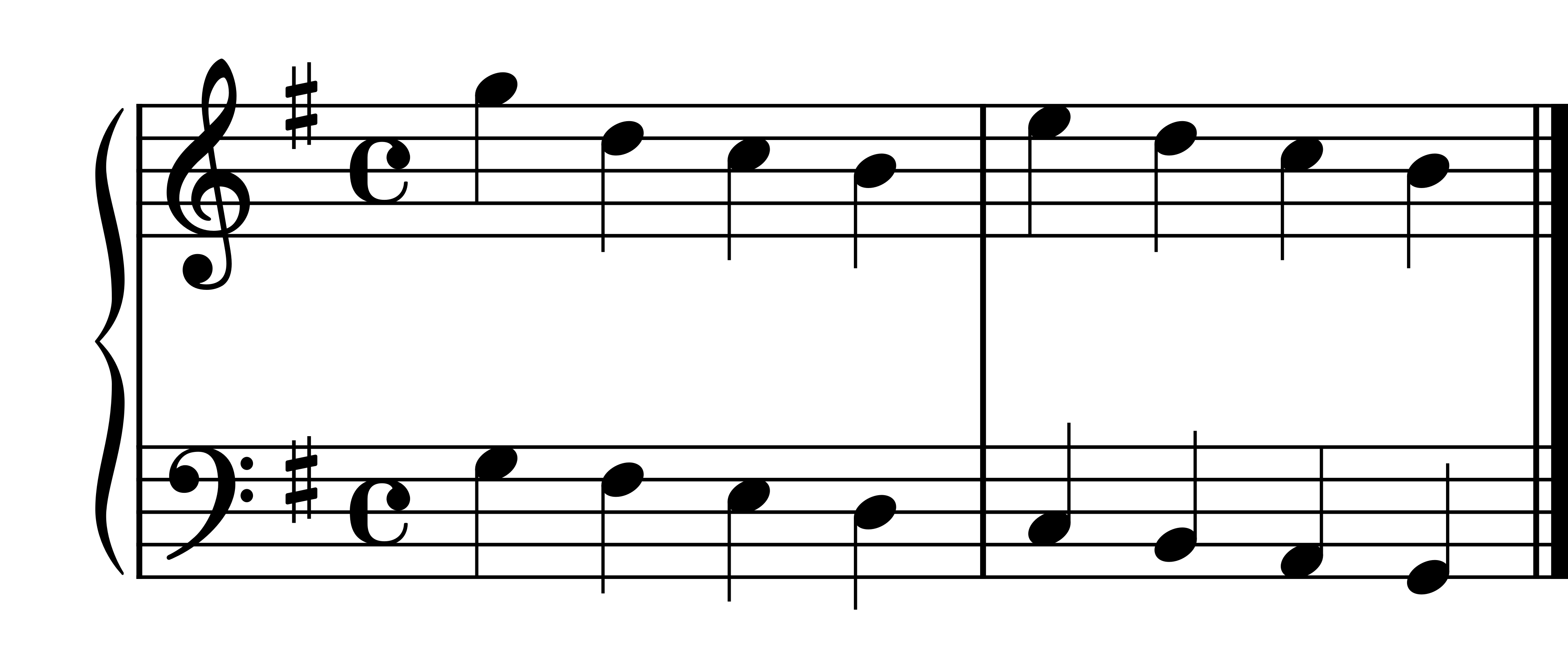Introduction to Intervals
7 Sight Singing Assignment
Rhythmic Solos
Conduct in duple, triple, or quadruple time as indicated by the numerator of the time signature. Chant the rhythms, using the syllable “Tah.”

Rhythmic Duets
First time: chant the top line using the syllable “Tah” while simultaneously clapping the bottom line.
Second time: clap the top line while counting the beats of the lower line out loud (i.e. “One, two, three, four” or “one, two”).

The “Find Do” Game
Step One: the instructor plays a pitch on the piano. This pitch is your do. The instructor asks the student to sing ti, re, mi, or sol in relation to the do. Tip: use an intermediary step to navigate your way to the requested pitch. For example:

Step Two: the instructor plays a pitch on the piano. This pitch may be ti, re, mi, or sol. Using the given pitch as your starting point, find do. Find an intermediary method that works successfully every time, and in any possible key. For example:

Melodic Solos
Sing these melodies using movable-do solfege. Conduct yourself in two, three, or four as directed by the numerator of the time signature.
- Look at the clef, key signature, and time signature. Play the tonic triad on the piano. Sing through a one-octave scale and arpeggio of the given key.
- Look at the note values, pitches, and overall shape of the melody.
- The first time you sight-read, practice conducting and rhythm only, using the syllable “Tah.” The second time, add pitch and solfege.

A scale in context: an excerpt from the second movement of Beethoven’s “Archduke” Trio, Op. 97.

A scale using smaller and smaller note values

A familiar stepwise melody: “Hot Cross Buns”

Stepwise melodies in a variety of clefs and time signatures


Not all songs start on do!



Melodic Duets
Sing the upper part while playing the lower part on the piano. (If the excerpt doesn’t fall comfortably within your vocal range, transpose it up or down an octave as needed.) Try to stick to your own notes without getting distracted by the other part. Once you are adept at doing this, sing the lower part while playing the upper part on the piano.


Rounds
Rounds are an excellent way to gain confidence in singing harmonically. The well-known round “Are You Sleeping?” uses mostly stepwise motion and is composed of tonic and dominant harmony. Sing this round several times through with a partner, using conducting and solfege. The second singer should begin when the first singer reaches measure 3. For fun, try singing “Are You Sleeping?” with three or four singers.


